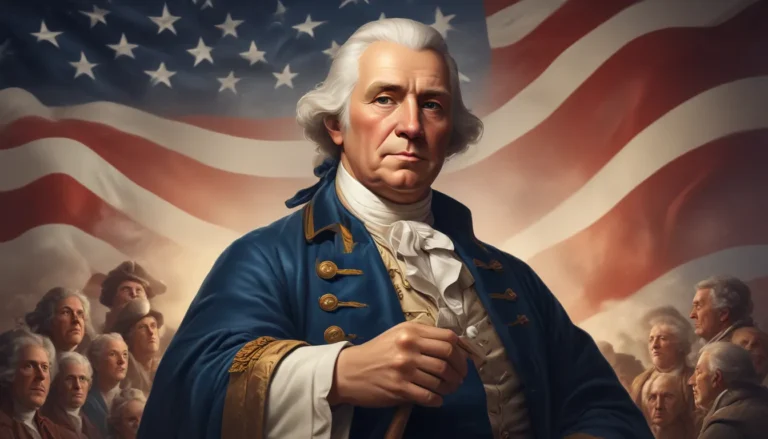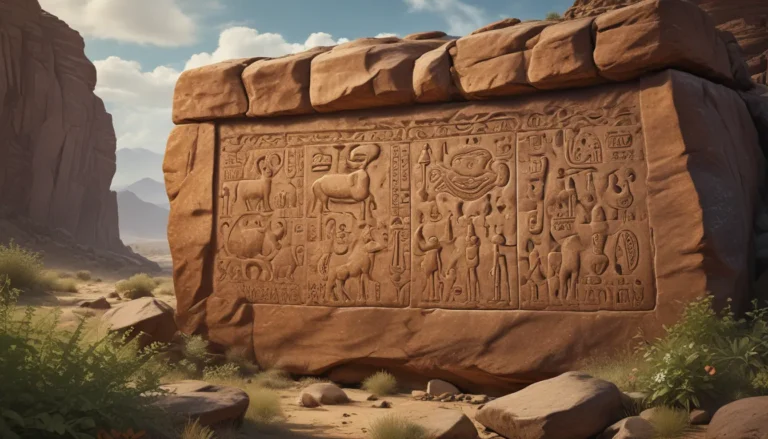The images in our articles may not match the content exactly. They are used to grab your attention, not to show the exact details in the text. The images complement the text but do not replace it.
Welcome to a journey through the intricate web of history and governance that is the United States Constitution. This remarkable document, revered as the foundation of the American democratic system, holds within its pages a wealth of secrets and stories waiting to be uncovered. Join us as we delve into 15 little-known but captivating facts about the U.S. Constitution that will broaden your understanding and appreciation of this historical treasure!
The Birth of a Nation’s Backbone: Oldest Written National Constitution
Let’s kick off our exploration with a compelling fact: the U.S. Constitution stands as the oldest written national constitution still in use today. Signed on September 17, 1787, and brought into effect on March 4, 1789, after ratification by nine of the 13 original states, this foundational document has endured the test of time, shaping the governance of a nation for over two centuries.
Unveiling the Architects: The Framers Behind the Scenes
At the heart of the U.S. Constitution lies a group of visionaries known as the “Framers.” Among these distinguished individuals were the likes of James Madison, George Washington, Alexander Hamilton, Benjamin Franklin, and Thomas Jefferson. These influential figures played key roles in shaping the document and forging the path for the future of the United States, with many of them later ascending to the presidency.
Image from Flickr
James Madison: The Prodigy Behind the Pen
James Madison, often hailed as the “Father of the Constitution,” left an indelible mark on the drafting process with his profound contributions. Instrumental in crafting the Virginia Plan, which laid the groundwork for the Constitution’s structure, Madison’s legacy continues to resonate through the annals of American history.
An Historic Assembly: The Constitutional Convention Unveiled
Embark on a journey back to May 25 to September 17, 1787, as we uncover the events of the Constitutional Convention held in Philadelphia, Pennsylvania. Originally convened to revise the Articles of Confederation, the gathering soon pivoted towards the creation of a new constitution, setting the stage for a monumental shift in the country’s governance.
The Art of Compromise: Decoding the Great Compromise
A pivotal moment in the Constitutional Convention unfolded through the Great Compromise, also known as the Connecticut Compromise. This landmark agreement resolved the contentious debate over Congress’s structure, culminating in the establishment of a bicameral legislature balancing representation based on population and state parity.
Unveiling the Controversial: The Three-Fifths Compromise
Delve into the complexities of history with the Three-Fifths Compromise, a divisive agreement reached during the Constitutional Convention. This controversial measure outlined the method by which enslaved individuals would be counted for representation and taxation, reaffirming the challenges and contradictions embedded in the nation’s early foundations.
Decoding the Preamble: The Voice of “We the People”
Unlock the profound meaning embedded in the Constitution’s Preamble, the opening statement that encapsulates the document’s purpose and guiding principles. The iconic words, “We the People of the United States, in Order to form a more perfect Union…” underscore the principle of popular sovereignty, emphasizing the government’s derivation of power from its citizens.
Image from Flickr
Unraveling the Architecture: The Seven Articles Defined
Embark on a structural journey through the Constitution’s seven articles, each delineating a specific facet of governance:
- Article I: The Legislative Branch
- Article II: The Executive Branch
- Article III: The Judicial Branch
- Article IV: States’ Relations
- Article V: The Amendment Process
- Article VI: Federal Supremacy
- Article VII: Ratification
Safeguarding Liberties: The Bill of Rights Unveiled
Explore the protective shield of individual liberties enshrined in the Bill of Rights, the first ten amendments to the Constitution ratified in 1791. These amendments serve as a bulwark against government overreach, securing essential freedoms for American citizens.
A Beacon of Evolution: The Fluidity of Amendments
Witness the dynamic evolution of the Constitution through its 27 amendments, reflecting the nation’s responsiveness to changing societal needs and values. The most recent amendment, ratified in 1992, stands as a testament to the document’s adaptability in the face of evolving challenges.
Upholding Tradition: The Ritual of Ratification
Trace the path of the Constitution’s ratification, which demanded approval from nine out of the 13 original states. From Delaware’s swift endorsement on December 7, 1787, to Rhode Island’s final consent on May 29, 1790, the journey towards solidifying the nation’s governance was marked by a delicate dance of state approvals.
Balancing Act: The Essence of Federalism Revealed
Dive deep into the concept of federalism, a cornerstone of the U.S. Constitution that divides power between the national and state governments. This delicate balance safeguards against the concentration of authority in a singular entity, preserving the autonomy and rights of individual states.
The Guardian Clause: Unveiling the Supremacy Clause
Explore the cornerstone of legal authority embedded in Article VI, Clause 2 of the Constitution – the Supremacy Clause. This pivotal provision establishes the supremacy of the Constitution, federal laws, and treaties as the highest law of the land, ensuring harmony and coherence in the legal framework.
Empowering Adaptation: The Necessary and Proper Clause Unveiled
Embark on a journey through the Elastic Clause, housed in Article I, Section 8, Clause 18, granting Congress the authority to enact laws essential for executing its enumerated powers. The Necessary and Proper Clause empowers the federal government to address emergent issues and uncertainties not explicitly addressed in the Constitution.
Preserving Equilibrium: The Tenets of Separation of Powers
Experience the symphony of governance orchestrated by the U.S. Constitution’s division of power among the legislative, executive, and judicial branches. This framework of separation of powers ensures a harmonious system of checks and balances, preventing any single branch from wielding excessive authority and upholding the government’s integrity.
In Conclusion: A Glance at the Tapestry of History
As we conclude this riveting exploration, we gaze upon the United States Constitution with renewed reverence and admiration. A beacon of governance, a bastion of liberty, and a testament to adaptability, this foundational document continues to shape the American narrative with its enduring legacy. The 15 facts unveiled here offer a mere glimpse into the multifaceted tapestry of this essential historical artifact.
Your Exploration Awaits
Venture forth into the realm of history, governance, and constitutional intricacies with us. Each fact uncovered, each insight gained, is a step towards a deeper understanding of the United States Constitution. Join our community of inquisitive minds, where knowledge is shared, history is revered, and learning knows no bounds. Let your curiosity guide you as you embark on a journey of discovery through the annals of American democracy!
Were these insights enlightening?
At the core of our mission lies a commitment to delivering credible, engaging content that sparks curiosity and fosters learning. Every fact shared on our platform is a gem contributed by individuals like you, enriching our collective knowledge base. Our dedicated editors diligently vet each submission to ensure accuracy and reliability, guaranteeing that the information you encounter is both captivating and trustworthy. Trust in our dedication to quality and authenticity as you explore, learn, and grow alongside us.






